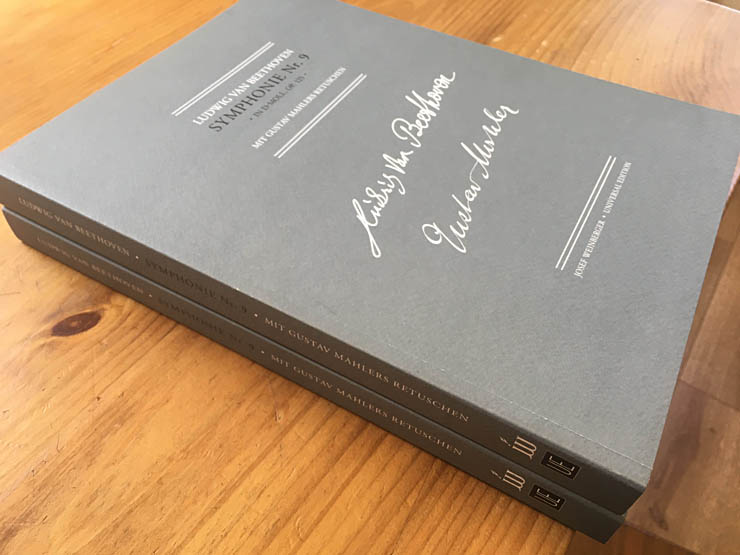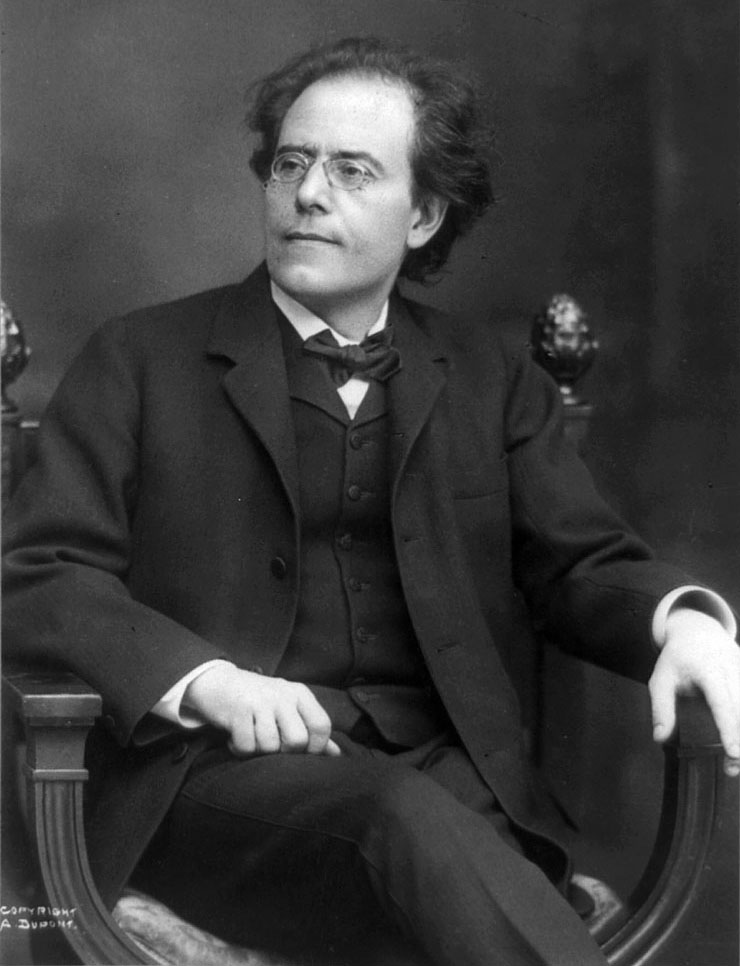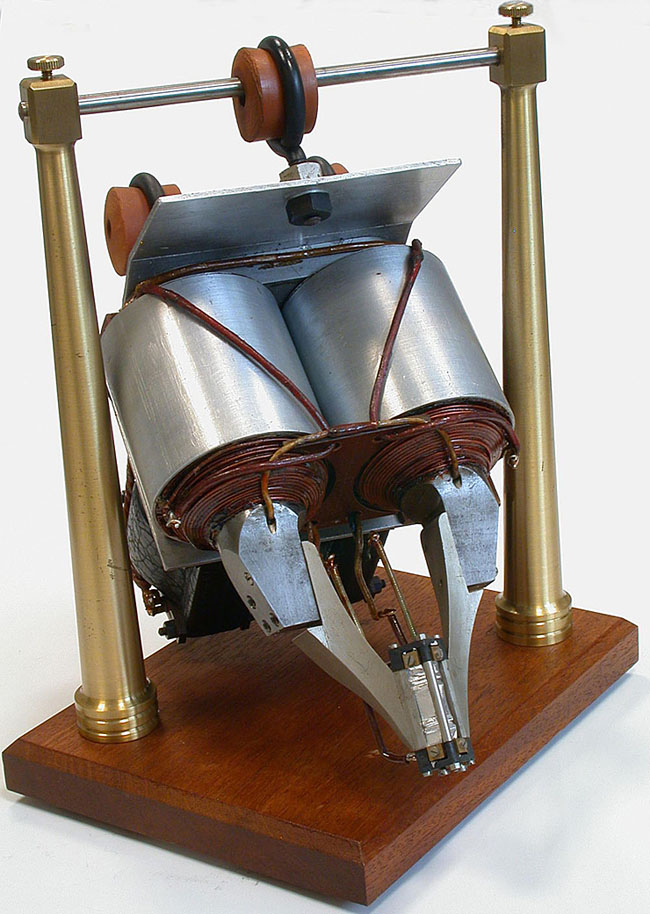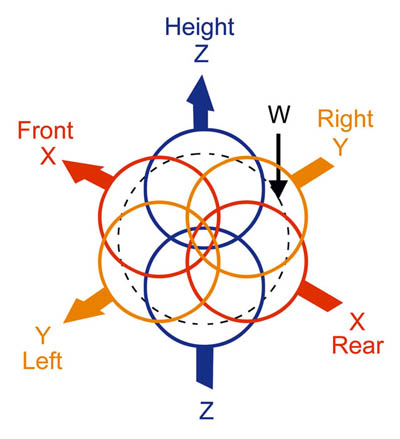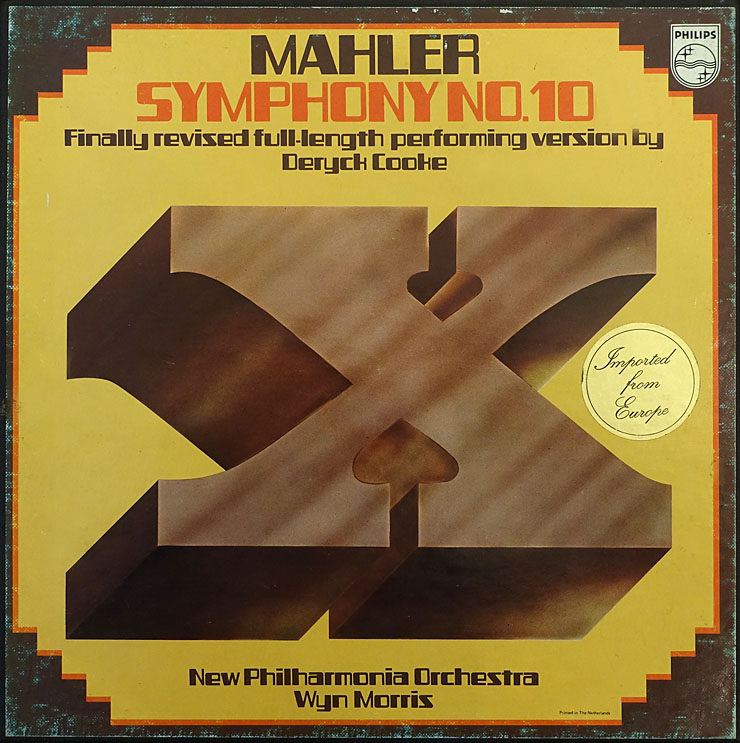Gustav Mahler conducted Beethoven’s Ninth Symphony on ten occasions: in Prague, Hamburg, Vienna, Strassburg and New York. For the last seven of these performances he prepared and used his own score and orchestral parts. I have transcribed and edited these materials...
A Ripping Yarn
Converting CDs to WAV files (Part 3)
How to Rip CDs that have Pre-emphasis.
At the time of writing, the current version of EAC (v. 1.3) will indicate in the track listing upon loading the CD whether the pre-emphasis flags are set in the TOC, but to discover whether they are set in the actual tracks (as with the Denon CDs discussed above) you need an earlier version (e.g. v.0.95 prebeta 3). These flags in the Q subcode of the music tracks can be read by using the menu item “Action/TOC Alterations/Detect TOC Manually” — you can hear EAC doing its job as it goes through the tracks. This option was removed from later versions of EAC to address possible legal problems in Germany. Neither of the other two programs gives information about the flags.
I have used three different ripping methods:
1. If the flags are set in the TOC, iTunes will recognise them (though not report this) and tacitly apply de-emphasis automatically. How well the de-emphasis is done is shown below. iTunes will not process correctly a CD with a flag only in the music track and not in the TOC.
2. Foobar2000, also, does not alert you to the fact that you are dealing with a CD that has some or all of its tracks pre-emphasised: for that you need EAC. Foobar2000 with the IIR filter plug-in set to “CD de-emphasis” will de-emphasise properly. This involves downloading the plug-in and setting it up within Foobar2000. Since it is necessary to select the de-emphasis manually, care needs to be taken when dealing with CDs that have a mixture of tracks with and without pre-emphasis that those tracks that are not pre-emphasised do not pass through the filter. (Obviously, this demands two runs of the software.) A pre-emphasised CD in good condition can be ripped accurately with Foobar2000 but, given that the CDs that need de-emphasis are up to 30 years old, it is possible that EAC is the only program that can read data from some of them accurately if they have been abused over the years.
3. Use EAC to rip and then deal with the de-emphasis separately. The question is then, how to de-emphasise the music after it has been accurately ripped by EAC.
A. The obvious solution is to make up an analog circuit with the required frequency response. This makes perfect sense, as the original pre-emphasis was most likely done in the analog domain. A suitable circuit is similar to one used for RIAA correction and such a circuit can be modified quite easily. The RIAA circuit has three turnover points at 3180 µs, 318 µs and 75µs. CDs require only two turn-over points, at 50 µs and 15 µs. The shape, plotted in dB versus log(frequency) is shown below (see the table at the end of the page for identification of the frequencies):
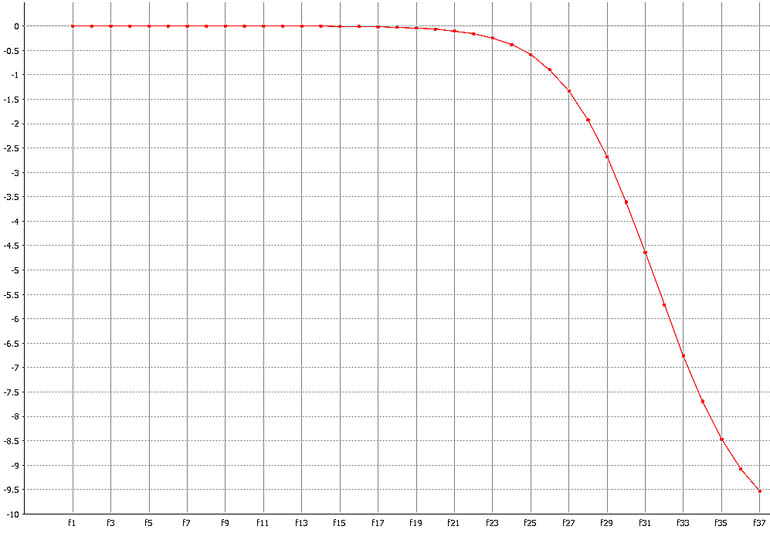
B. Synthesize the response in the digital domain. If you know how to write a program to do this, you are ahead of me. I use my DAW, Samplitude Pro-X3, which has two options:
i) the FFT plug-in has a de-emphasis preset.
ii) I have made a de-emphasis preset for the EQ116 plug-in, the possible advantage of which is that it can be made to have the same phase response as an analog circuit, though I am not sure whether this makes any difference to the sound or not.
Tests
Using the tone generation facility of Cool Edit Pro, I made a mono wavefile of 37 different frequencies, each 10 seconds long and spaced at 1/3 octave intervals. I read this into Samplitude and burned a CD-R. I set the pre-emphasis flag (Samplitude puts this in the tracks and in the TOC!) but did not actually pre-emphasise the signal, as all I wanted to do was to test the accuracy of the de-emphasis applied after the ripping process. I ripped this CD with iTunes (with automatic de-emphasis), EAC (flat) and Foobar (with its IIR de-emphasis filter). Then I played the ripped files in Samplitude and measured the responses using RME's Digicheck.
The table below shows the results. The first two columns list the third octave frequencies used, identified in the graph above as f1-f37, and the third column gives the calculated response in decibels of a perfect de-emphasis circuit (all the decibel quantities should have a negative sign in front of them). In column four the response of the iTunes (v.11.1.0.126) de-emphasis is seen to be rather inaccurate. Column five shows Foobar2000 with its filter: better than iTunes, but not perfect. The last two columns show the result of correcting the flat EAC rip with the two Samplitude plug-ins. I tuned the EQ116 plug-in for the best result that I could achieve, and the FFT plug-in used the CD de-emphasis preset provided. These two are close to each other and to the ideal, though (at least theoretically) the EQ116 method may be preferable as it has the same phase response as an analog filter and will thus correct the phase of an analog pre-emphasis filter.
| Hz | Ideal | iTunes | Foobar | EQ116 | FFT | |
|---|---|---|---|---|---|---|
| f1–19 | 5–320 | 0.05 | 0.0 | 0.0 | 0.0 | 0.0 |
| f20 | 403.2 | 0.06 | 0.1 | 0.0 | 0.1 | 0.0 |
| f21 | 508 | 0.10 | 0.1 | 0.1 | 0.1 | 0.1 |
| f22 | 640 | 0.16 | 0.2 | 0.1 | 0.2 | 0.1 |
| f23 | 806.3 | 0.25 | 0.3 | 0.2 | 0.2 | 0.2 |
| f24 | 1016 | 0.38 | 0.5 | 0.3 | 0.4 | 0.3 |
| f25 | 1280 | 0.59 | 0.8 | 0.5 | 0.6 | 0.5 |
| f26 | 1612.7 | 0.89 | 1.2 | 0.8 | 0.9 | 0.8 |
| f27 | 2031.9 | 1.33 | 1.8 | 1.2 | 1.3 | 1.2 |
| f28 | 2560 | 1.92 | 2.5 | 1.7 | 1.9 | 1.8 |
| f29 | 3225.4 | 2.68 | 3.4 | 2.5 | 2.6 | 2.5 |
| f30 | 4063.7 | 3.60 | 4.5 | 3.5 | 3.5 | 3.5 |
| f31 | 5120 | 4.64 | 5.6 | 4.6 | 4.6 | 4.5 |
| f32 | 6450.8 | 5.72 | 6.7 | 5.8 | 5.7 | 5.6 |
| f33 | 8127.5 | 6.75 | 7.7 | 6.9 | 6.8 | 6.7 |
| f34 | 10240 | 7.69 | 8.6 | 7.9 | 7.8 | 7.7 |
| f35 | 12901.6 | 8.47 | 9.3 | 8.7 | 8.6 | 8.5 |
| f36 | 16255 | 9.08 | 9.7 | 9.2 | 9.2 | 9.1 |
| f37 | 20480 | 9.53 | 10.0 | 9.4 | 9.5 | 9.4 |
Conclusion
Ripping CDs with pre-emphasis is clearly fraught with difficulties, and there may actually be more problem cases than I have discussed here. Since music is meant to be enjoyed, perhaps the best advice is "When in doubt, trust your ears!"
Rev. 3 Dec 2018

